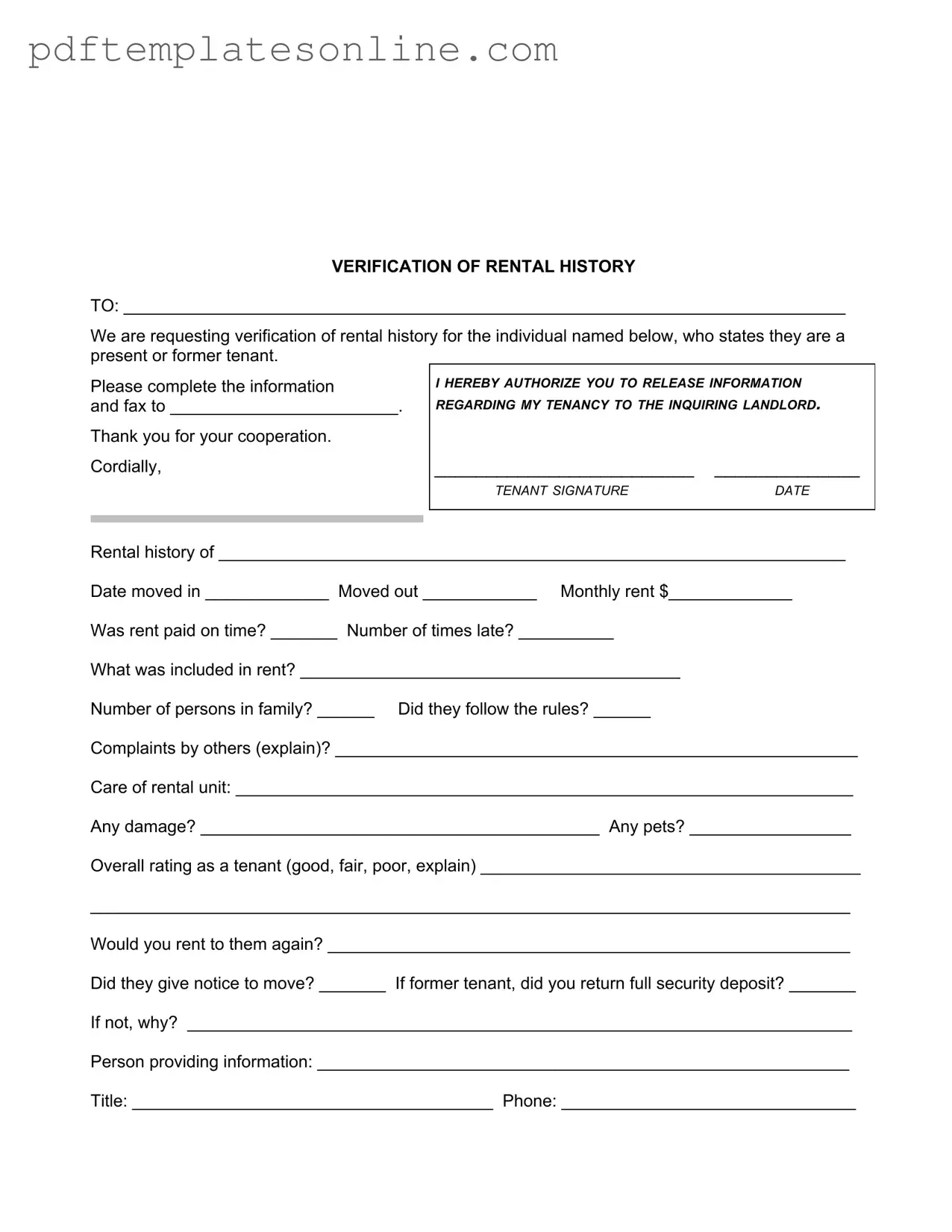Filling out the Verification of Rental History form can seem straightforward, but many people make mistakes that can delay the process or lead to misunderstandings. One common error is leaving the tenant's name blank. Without this crucial detail, the verification request may not reach the right person or property manager. Always ensure that the tenant's full name is clearly stated at the top of the form.
Another frequent mistake involves the dates of tenancy. Forgetting to fill in the move-in and move-out dates can create confusion. These dates are essential for the landlord to assess the length of the tenant's stay. Double-check that these fields are filled out accurately to avoid any potential issues.
Many people also overlook the monthly rent amount. This detail is critical for the landlord to understand the financial responsibilities of the tenant. If this information is missing or incorrect, it could lead to questions about the tenant's payment history and reliability.
When it comes to payment history, another mistake is failing to specify how many times rent was paid late. This information is vital for the landlord to gauge the tenant's reliability. If this section is left blank, it may raise red flags or lead to assumptions that could affect the tenant's future rental opportunities.
In addition, some individuals neglect to provide details about complaints from neighbors. If there were issues during the tenancy, it's important to explain them clearly. Omitting this information can result in a lack of transparency and trust between the tenant and the prospective landlord.
Another common error is not addressing the condition of the rental unit. The section asking about care of the rental unit should be filled out with specific observations. If there were any damages or issues, they should be noted. This helps the new landlord understand the tenant's habits and how they maintained their living space.
Many people forget to include the overall rating of the tenant. This subjective assessment can provide valuable insight into the tenant's behavior and reliability. Without this information, the landlord may miss important context that could influence their decision.
It’s also crucial to answer whether the tenant gave notice before moving out. Leaving this question unanswered can lead to assumptions about the tenant's communication style and respect for rental agreements. Clear and honest responses are key to building trust.
Finally, providing contact information for the person filling out the form is essential. Missing this detail can lead to delays in communication. Make sure to include a name, title, and phone number to facilitate follow-up questions from the landlord.
